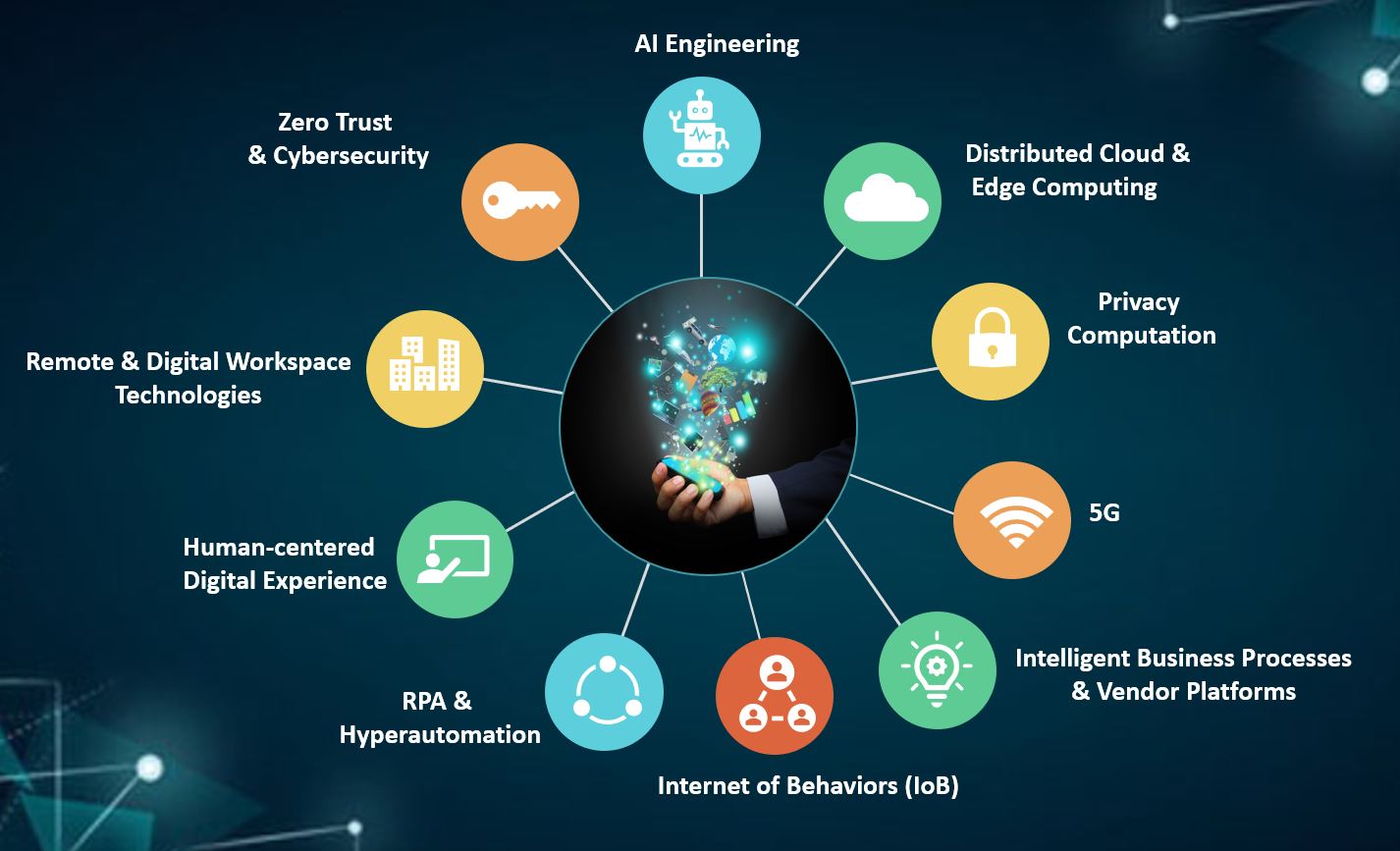What are Tech-Enabled Business Models and Why Do They Matter
Tech-enabled business models have revolutionized the way companies operate, creating new revenue streams, improving efficiency, and enhancing customer experiences. These innovative business strategies leverage technology to drive growth, increase competitiveness, and stay ahead of the curve. By adopting tech-enabled business models, companies can tap into the vast potential of digital transformation, unlocking new opportunities for success.
At its core, a tech-enabled business model is a strategic approach that integrates technology into every aspect of the business, from product development to customer engagement. This holistic approach enables companies to respond quickly to changing market conditions, capitalize on emerging trends, and create new value propositions that meet the evolving needs of customers.
Successful companies that have adopted tech-enabled business models include Amazon, which has disrupted the retail industry with its e-commerce platform, and Uber, which has transformed the transportation sector with its ride-hailing service. These companies have demonstrated the power of tech-enabled business models in driving innovation, growth, and profitability.
By embracing tech-enabled business models, companies can gain a competitive edge in today’s fast-paced digital landscape. These models enable businesses to be more agile, responsive, and customer-centric, ultimately leading to increased revenue, improved efficiency, and enhanced customer satisfaction. As technology continues to evolve, the importance of tech-enabled business models will only continue to grow, making them an essential component of any company’s strategic roadmap.
According to a recent study, companies that adopt tech-enabled business models are more likely to experience significant revenue growth, with 75% of respondents reporting an increase in revenue within the first year of implementation. Additionally, these models enable companies to improve operational efficiency, reduce costs, and enhance customer engagement, leading to increased customer loyalty and retention.
In conclusion, tech-enabled business models are a critical component of any company’s strategy, enabling businesses to drive innovation, growth, and profitability in today’s digital landscape. By embracing these models, companies can stay ahead of the curve, capitalize on emerging trends, and create new value propositions that meet the evolving needs of customers.
Key Characteristics of Tech-Enabled Business Models
Tech-enabled business models are characterized by several key features that enable businesses to stay competitive in a rapidly changing market. One of the most important characteristics is data-driven decision making, which involves using data analytics and insights to inform business decisions. This approach enables companies to respond quickly to changing market conditions, identify new opportunities, and optimize their operations for maximum efficiency.
Another key characteristic of tech-enabled business models is scalability, which refers to the ability of a business to grow and expand quickly and efficiently. This is often achieved through the use of cloud-based technologies, which enable companies to scale their operations up or down as needed without having to invest in expensive hardware or infrastructure.
Agility is also a critical characteristic of tech-enabled business models, as it enables companies to respond quickly to changing market conditions and customer needs. This is often achieved through the use of agile development methodologies, which involve rapid prototyping, testing, and iteration to develop new products and services.
Other key characteristics of tech-enabled business models include flexibility, adaptability, and a customer-centric approach. These characteristics enable companies to stay ahead of the curve, anticipate changing customer needs, and develop innovative solutions that meet those needs.
Companies that have successfully adopted tech-enabled business models, such as Amazon and Google, have demonstrated the importance of these characteristics in driving innovation, growth, and profitability. By embracing data-driven decision making, scalability, agility, and a customer-centric approach, businesses can stay competitive in a rapidly changing market and achieve long-term success.
In addition to these characteristics, tech-enabled business models also involve a range of other key elements, including digital transformation, innovation, and disruption. These elements enable companies to develop new business models, products, and services that meet the evolving needs of customers and stay ahead of the competition.
Overall, the key characteristics of tech-enabled business models are critical to driving innovation, growth, and profitability in today’s fast-paced digital landscape. By embracing these characteristics, businesses can stay ahead of the curve, anticipate changing customer needs, and develop innovative solutions that meet those needs.
How to Identify Opportunities for Tech-Enabled Business Model Innovation
Identifying opportunities for tech-enabled business model innovation requires a combination of market analysis, customer insight, and technological expertise. One approach is to analyze industry trends and identify areas where technology can be used to create new value propositions or improve existing ones. For example, the rise of the sharing economy has created opportunities for companies like Airbnb and Uber to develop new business models that leverage technology to connect buyers and sellers.
Another approach is to conduct customer research to identify unmet needs or pain points that can be addressed through tech-enabled business model innovation. This can involve gathering feedback through surveys, focus groups, or social media, and using data analytics to identify patterns and trends. For example, companies like Netflix and Amazon have used customer data to develop personalized recommendation engines that drive engagement and revenue.
Emerging technologies like artificial intelligence, blockchain, and the Internet of Things (IoT) also present opportunities for tech-enabled business model innovation. For example, companies like IBM and Microsoft are using AI to develop new business models that leverage machine learning and natural language processing to drive efficiency and innovation.
Companies that have successfully identified and capitalized on opportunities for tech-enabled business model innovation include Warby Parker, which has used technology to disrupt the eyewear industry, and Dollar Shave Club, which has used subscription-based models to revolutionize the razor industry.
To identify opportunities for tech-enabled business model innovation, businesses should consider the following steps:
1. Conduct market research to identify industry trends and emerging technologies.
2. Gather customer feedback and data to identify unmet needs and pain points.
3. Analyze competitors and identify areas for differentiation.
4. Develop a business case for tech-enabled business model innovation, including revenue projections and cost savings.
5. Pilot and test new business models to validate assumptions and refine the approach.
By following these steps, businesses can identify opportunities for tech-enabled business model innovation and develop new value propositions that drive growth, efficiency, and innovation.
Designing a Tech-Enabled Business Model: A Step-by-Step Guide
Designing a tech-enabled business model requires a structured approach that takes into account the company’s goals, target market, and competitive landscape. Here is a step-by-step guide to designing a tech-enabled business model:
Step 1: Define the Value Proposition
The first step in designing a tech-enabled business model is to define the value proposition. This involves identifying the unique benefits that the company’s product or service offers to customers. For example, Warby Parker’s value proposition is to provide affordable, fashionable eyewear to customers through a convenient online platform.
Step 2: Identify Key Partners and Suppliers
The next step is to identify key partners and suppliers that can help the company deliver its value proposition. This may include technology providers, logistics companies, or other businesses that can provide critical services or components. For example, Uber’s key partners include drivers, who provide the transportation services that customers need.
Step 3: Determine Revenue Streams
The third step is to determine the revenue streams that will support the business model. This may include sales, subscriptions, advertising, or other forms of revenue. For example, Netflix’s revenue stream is primarily based on subscription fees from customers.
Step 4: Define the Cost Structure
The fourth step is to define the cost structure of the business model. This includes identifying the key costs associated with delivering the value proposition, such as technology costs, marketing costs, and operational costs. For example, Amazon’s cost structure includes significant investments in technology and logistics.
Step 5: Identify Key Activities and Resources
The fifth step is to identify the key activities and resources required to deliver the value proposition. This may include technology development, marketing, sales, and customer support. For example, Airbnb’s key activities include developing and maintaining its online platform, as well as providing customer support to hosts and guests.
By following these steps, companies can design a tech-enabled business model that is tailored to their specific needs and goals. This can help them to stay competitive in a rapidly changing market and achieve long-term success.
Real-world examples of successful tech-enabled business models include:
Warby Parker: Warby Parker’s business model is based on providing affordable, fashionable eyewear to customers through a convenient online platform. The company’s value proposition is to offer high-quality eyewear at a lower cost than traditional eyewear retailers.
Uber: Uber’s business model is based on providing transportation services to customers through a mobile app. The company’s value proposition is to offer convenient, affordable transportation to customers in cities around the world.
Netflix: Netflix’s business model is based on providing streaming video services to customers through a subscription-based model. The company’s value proposition is to offer a wide selection of movies and TV shows to customers for a low monthly fee.
Overcoming Common Challenges in Implementing Tech-Enabled Business Models
Implementing tech-enabled business models can be a complex and challenging process, requiring significant changes to a company’s operations, culture, and technology infrastructure. Despite the potential benefits, many companies struggle to overcome common challenges that can hinder the success of their tech-enabled business models.
One of the most significant challenges is cultural resistance to change. Many employees may be hesitant to adopt new technologies and processes, especially if they are unfamiliar with them. To overcome this challenge, companies should provide training and support to help employees understand the benefits of the new business model and how to use the new technologies.
Another challenge is the lack of technical expertise. Implementing tech-enabled business models requires a high level of technical expertise, including knowledge of software development, data analytics, and cybersecurity. To overcome this challenge, companies should invest in hiring and training technical staff, or partner with external experts who can provide the necessary expertise.
Difficulty in measuring success is also a common challenge. Tech-enabled business models often require new metrics and KPIs to measure success, which can be difficult to establish. To overcome this challenge, companies should define clear metrics and KPIs from the outset, and regularly review and adjust them as needed.
Other common challenges include integrating new technologies with existing systems, managing data quality and security, and ensuring regulatory compliance. To overcome these challenges, companies should develop a comprehensive implementation plan, including timelines, budgets, and resource allocation.
Strategies for overcoming these challenges include:
1. Develop a clear vision and strategy for the tech-enabled business model.
2. Provide training and support to employees to help them understand the benefits of the new business model.
3. Invest in hiring and training technical staff, or partner with external experts.
4. Define clear metrics and KPIs to measure success.
5. Develop a comprehensive implementation plan, including timelines, budgets, and resource allocation.
By understanding the common challenges associated with implementing tech-enabled business models, companies can develop strategies to overcome them and achieve success.
Examples of companies that have successfully overcome these challenges include:
Amazon: Amazon’s success with its tech-enabled business model is due in part to its ability to overcome cultural resistance to change. The company has invested heavily in training and supporting its employees, helping them to understand the benefits of the new business model.
Netflix: Netflix’s success with its tech-enabled business model is due in part to its ability to overcome the lack of technical expertise. The company has invested in hiring and training technical staff, and has partnered with external experts to provide the necessary expertise.
Measuring the Success of Tech-Enabled Business Models
Measuring the success of tech-enabled business models is crucial to understanding their impact on revenue growth, customer acquisition, and retention. Key performance indicators (KPIs) play a vital role in evaluating the effectiveness of these models. Companies that have successfully implemented tech-enabled business models track KPIs such as customer lifetime value, customer acquisition costs, and retention rates to gauge their performance.
For instance, companies like Netflix and Airbnb track metrics such as customer engagement, subscription rates, and revenue growth to measure the success of their tech-enabled business models. These metrics provide valuable insights into customer behavior, preferences, and needs, enabling businesses to make data-driven decisions and optimize their models accordingly.
Another important aspect of measuring the success of tech-enabled business models is to establish clear goals and objectives. This involves defining what success means for the business and setting specific, measurable, achievable, relevant, and time-bound (SMART) targets. By doing so, businesses can create a roadmap for success and track progress towards their goals.
In addition to tracking KPIs and setting clear goals, businesses should also conduct regular assessments of their tech-enabled business models. This involves evaluating the model’s strengths, weaknesses, opportunities, and threats (SWOT analysis) to identify areas for improvement. By conducting regular assessments, businesses can stay ahead of the competition and make adjustments to their models as needed.
Furthermore, businesses should also consider using data analytics tools to measure the success of their tech-enabled business models. These tools provide valuable insights into customer behavior, preferences, and needs, enabling businesses to make data-driven decisions and optimize their models accordingly. By leveraging data analytics, businesses can gain a competitive edge and stay ahead of the curve in a rapidly changing market.
In conclusion, measuring the success of tech-enabled business models is critical to understanding their impact on revenue growth, customer acquisition, and retention. By tracking KPIs, setting clear goals, conducting regular assessments, and leveraging data analytics tools, businesses can optimize their models and stay ahead of the competition.
Real-World Examples of Successful Tech-Enabled Business Models
Several companies have successfully implemented tech-enabled business models, disrupting traditional industries and achieving remarkable success. Here are a few examples:
Airbnb, for instance, has revolutionized the hospitality industry by creating a platform that connects travelers with local hosts. By leveraging technology, Airbnb has created a new revenue stream for homeowners and provided travelers with unique and affordable accommodation options. Today, Airbnb is one of the largest accommodation providers in the world, with over 7 million listings in more than 191 countries.
Uber, another successful example, has transformed the transportation industry by creating a platform that connects riders with drivers. By using data analytics and machine learning algorithms, Uber has optimized its pricing and routing systems, providing users with fast and affordable transportation options. With over 100 million monthly active users, Uber has become one of the largest transportation companies in the world.
Netflix, a pioneer in the streaming industry, has disrupted traditional television and movie distribution models by creating a platform that provides users with on-demand access to a vast library of content. By leveraging data analytics and machine learning algorithms, Netflix has optimized its content recommendation systems, providing users with personalized viewing experiences. Today, Netflix is one of the largest media companies in the world, with over 220 million subscribers in over 190 countries.
These companies have achieved success by leveraging key characteristics of tech-enabled business models, including data-driven decision making, scalability, and agility. By analyzing industry trends, customer needs, and emerging technologies, these companies have identified opportunities for innovation and capitalized on them.
For example, Airbnb’s success can be attributed to its ability to identify a gap in the market for unique and affordable accommodation options. By leveraging technology, Airbnb created a platform that connected travelers with local hosts, providing a new revenue stream for homeowners and disrupting traditional hospitality industry models.
Similarly, Uber’s success can be attributed to its ability to optimize its pricing and routing systems using data analytics and machine learning algorithms. By providing users with fast and affordable transportation options, Uber has disrupted traditional transportation industry models and become one of the largest transportation companies in the world.
Netflix’s success can be attributed to its ability to optimize its content recommendation systems using data analytics and machine learning algorithms. By providing users with personalized viewing experiences, Netflix has disrupted traditional television and movie distribution models and become one of the largest media companies in the world.
These examples demonstrate the potential of tech-enabled business models to disrupt traditional industries and create new opportunities for innovation. By analyzing industry trends, customer needs, and emerging technologies, businesses can identify opportunities for innovation and capitalize on them, achieving remarkable success in the process.
The Future of Tech-Enabled Business Models: Trends and Predictions
The future of tech-enabled business models is exciting and rapidly evolving. Emerging trends such as artificial intelligence, blockchain, and the Internet of Things (IoT) are expected to shape the business landscape and create new opportunities for innovation. In this article, we will explore these trends and offer predictions on how they will impact the future of tech-enabled business models.
Artificial intelligence (AI) is expected to play a major role in the future of tech-enabled business models. AI-powered technologies such as machine learning and natural language processing will enable businesses to automate processes, improve decision-making, and enhance customer experiences. For example, AI-powered chatbots will become increasingly common, enabling businesses to provide 24/7 customer support and improve customer engagement.
Blockchain technology is another trend that is expected to impact the future of tech-enabled business models. Blockchain will enable businesses to create secure, transparent, and tamper-proof records, reducing the risk of fraud and increasing trust in transactions. For example, blockchain-based supply chain management systems will enable businesses to track the origin and movement of goods in real-time, reducing the risk of counterfeiting and improving inventory management.
The Internet of Things (IoT) is also expected to play a major role in the future of tech-enabled business models. IoT will enable businesses to connect devices and sensors, creating new opportunities for data collection and analysis. For example, IoT-powered smart homes will enable businesses to provide personalized energy management and home security services, improving customer experiences and reducing energy consumption.
Another trend that is expected to impact the future of tech-enabled business models is the increasing use of cloud computing and edge computing. Cloud computing will enable businesses to access scalable and on-demand computing resources, reducing the need for expensive hardware and improving agility. Edge computing will enable businesses to process data in real-time, reducing latency and improving decision-making.
In addition to these trends, we also expect to see the increasing use of 5G networks, which will enable businesses to access faster and more reliable connectivity. This will enable businesses to provide new services such as augmented and virtual reality, improving customer experiences and creating new revenue streams.
Overall, the future of tech-enabled business models is exciting and rapidly evolving. Emerging trends such as AI, blockchain, IoT, cloud computing, and edge computing will create new opportunities for innovation and growth. Businesses that are able to adapt to these trends and leverage the latest technologies will be well-positioned for success in the future.
As we look to the future, it is clear that tech-enabled business models will continue to play a major role in shaping the business landscape. By staying ahead of the curve and leveraging the latest technologies, businesses can create new opportunities for innovation and growth, and stay ahead of the competition.






